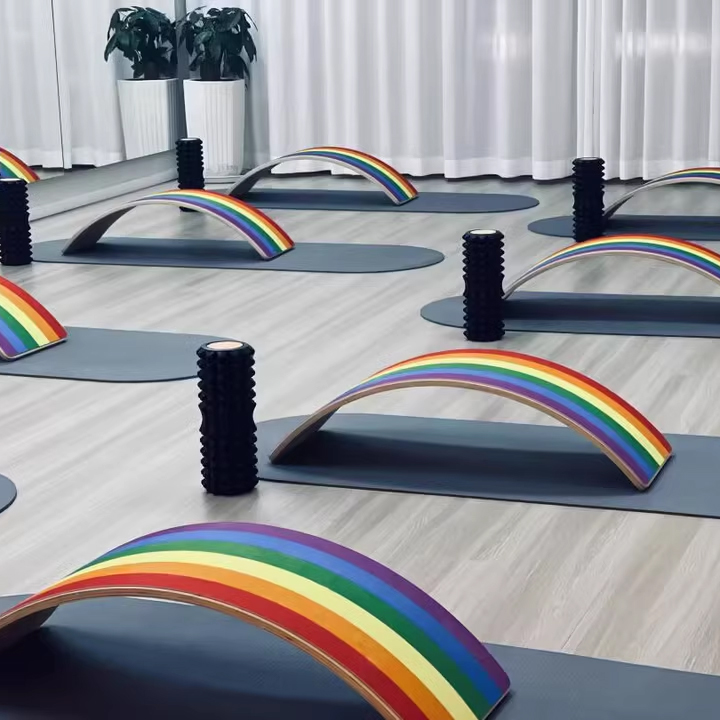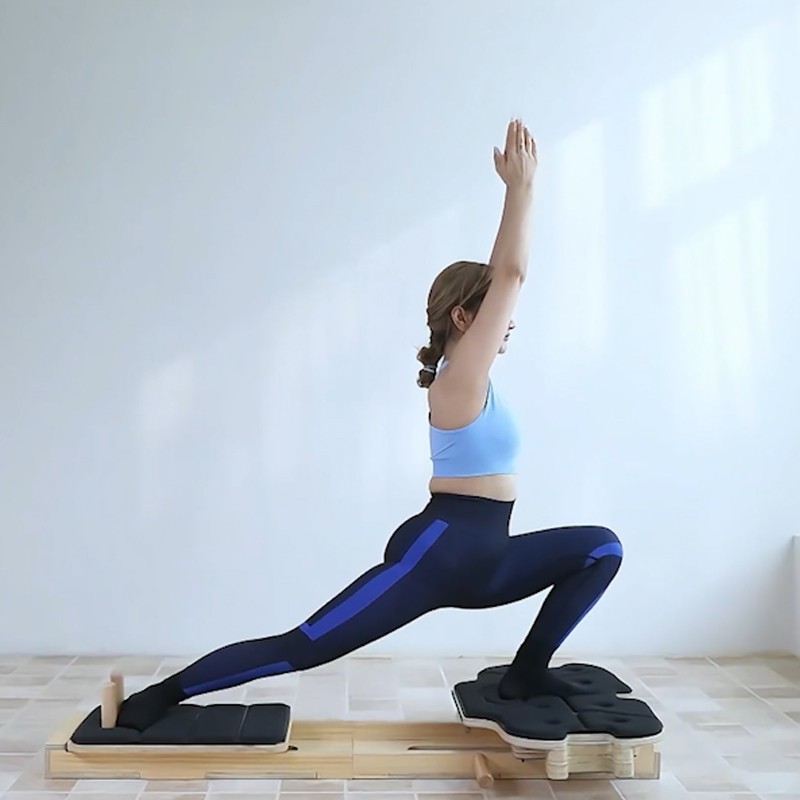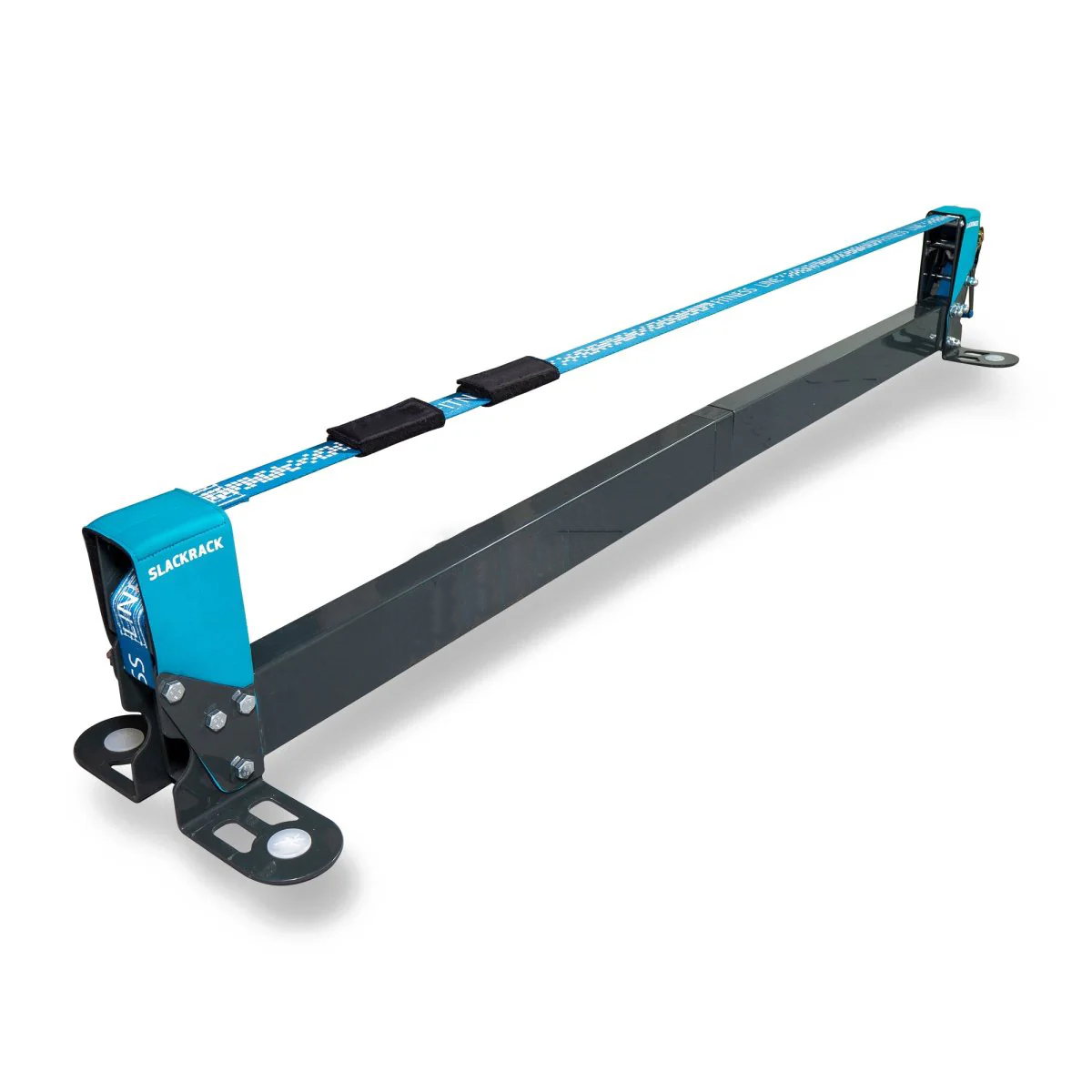Combining professional sports principles with practical experience, the following will provide an in-depth analysis from the perspectives of playability and functionality.
1. Playability: Infinite possibilities from beginner to advancedThe charm of the slackline balance board lies in its progressive challenges and creative freedom, where players of different skill levels can find enjoyment:Newbie-friendly, quick to achieve a sense of accomplishmentBeginners can set up a 4-6 meter low slackline (0.5 meters off the ground), practice basic standing barefoot, and can walk independently for several steps within 2 hours. After a week, they can complete turns, one-legged standing, and other movements.Low skill threshold: Only requires trees or fixed points and a slackline tensioner, which is cost-effective and does not require a professional setup.Advanced gameplay is diverse, pushing creative limitsDynamic balance: Jumping, spinning, and performing backflips on the elastic slackline (requires trampoline training assistance).Mixed challenges:High slackline: Above 6 meters off the ground, with safety harness protection (like Zhang Liang crossing the Tiger Leaping Gorge), testing psychological resilience.Fancy yoga: Performing poses like “Tree Pose” and “Dancer’s Pose” on the slackline to strengthen core control.Obstacle expansion: Adding rings, climbing ladders, and other hanging objects (patented design), transforming it into a multifunctional training system.
Social and Competitive Attributes Stand OutIn group activities, ‘Slackline Relay Race’ and ‘Balance Endurance’ can be set up, or actions can be choreographed in conjunction with music, combining performance and interactivity.The table below compares the characteristics of gameplay at different stages:Player Level | Typical Play | Required Equipment | Challenge GoalBeginner | Basic Walking, Standing Balance | 5cm Wide Slackline, Tensioner | Walk 5-10 meters without fallingIntermediate | One-Legged Standing, Turning, Small Jumps | Standard 2.5cm Slackline | Continuous Action CombinationsExpert | Flips, High-Walking, Yoga Poses | High-altitude Protection Gear, Trampoline | Creative Moves, Psychological Control
II. Functions: Beyond Balance – Benefits for Body and MindSlacklining is not only a recreational tool but also a scientifically validated comprehensive training equipment:Strengthening Balance and ProprioceptionThe elasticity of the slackline forces the body to fine-tune muscle activation, significantly enhancing dynamic balance (research shows that 20 seconds of standing training can suppress spinal reflexes and reduce joint wobbling).Compared to tightrope walking: the slackline has no support rope, relying solely on body movements for stabilization, demanding higher coordination from the ankle, knee, and hip joints.Improving Athletic Performance and Rehabilitation ValueOptimizing lower body strength: Activates the quadriceps and deep stabilizing muscle groups; basketball players saw a 12% improvement in vertical jump after 6 weeks of training.Low-impact rehabilitation: The elastic slackline reduces joint stress, making it suitable for recovery training after knee and ankle injuries.Psychological Regulation and Focus Training”Moving Meditation”: A state of high concentration similar to mindfulness practice; players like Zhang Liang claim it effectively alleviates anxiety.Pressure Training: Slacklining at heights requires overcoming fear, fostering the ability to make calm decisions.Cross-Disciplinary Functional ApplicationsPre-training for skiing/rock climbing: Simulates edge control of ski boards and foot placement on rock points, enhancing specific balance sensitivity.Fall Prevention for the Elderly: Enhances the ability to regulate center of gravity, reducing the risk of falls.
3. Safety and Entry RecommendationsSite Selection: Grass or soft mat surfaces, avoid gravel/hard ground; stay away from crowds to prevent disturbances.Equipment Configuration:Beginners should use a 5cm wide flat belt (high tolerance), switch to a 2.5cm standard belt after gaining proficiency.A climbing safety harness and dynamic rope are essential for high altitude walking (connection points must have double backups).Core Technique:”Focus on a fixed point (such as a tree trunk), bend your knees slightly, extend your arms like wings—use your feet to ‘feel’ the flat belt, not your eyes.”
Summary: The slackline balance board is a highly playable ‘dynamic balance laboratory’: easy to start, difficult to master, suitable for both solo meditation and group enjoyment; its functions also encompass physical strength enhancement, mental training, and support for cross-disciplinary sports. If you pursue the fun of challenging the ‘thousands of faces of a single rope’, it is worth the investment—after all, when the slackline is there, walking itself is the answer.








